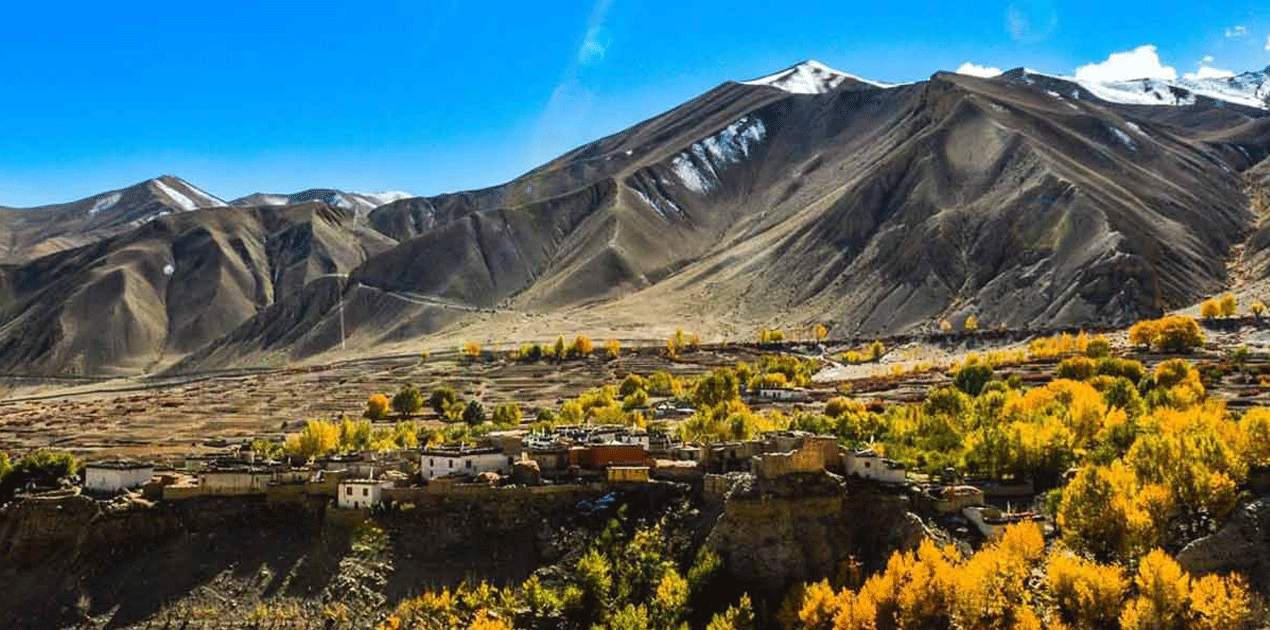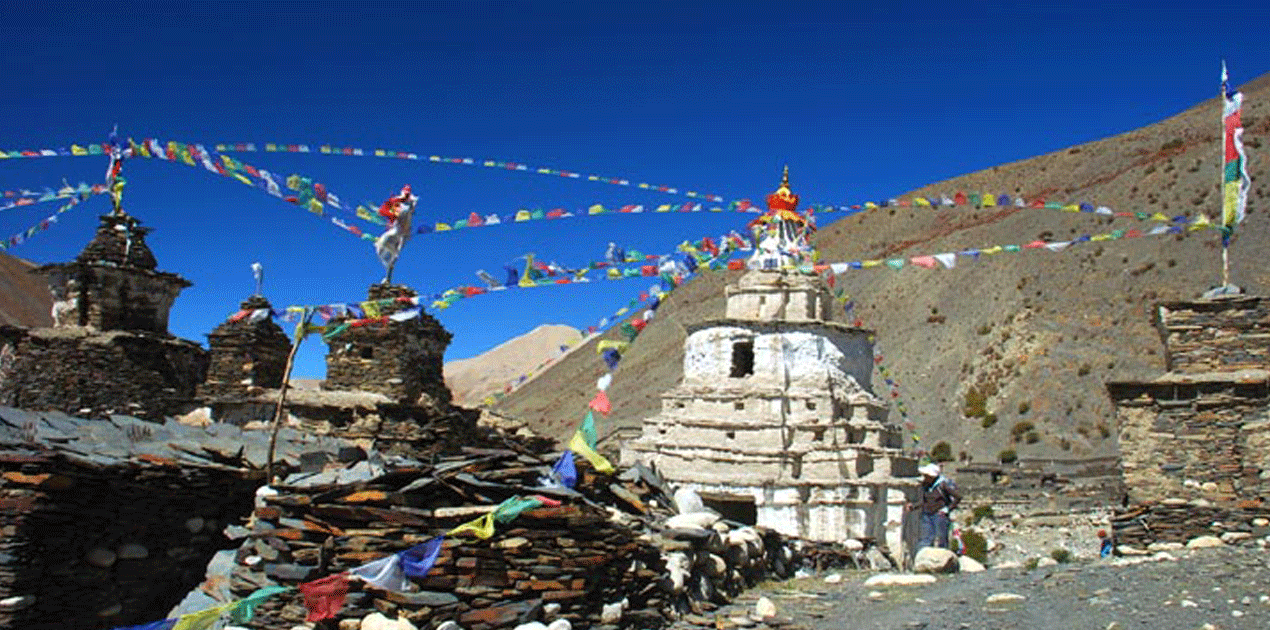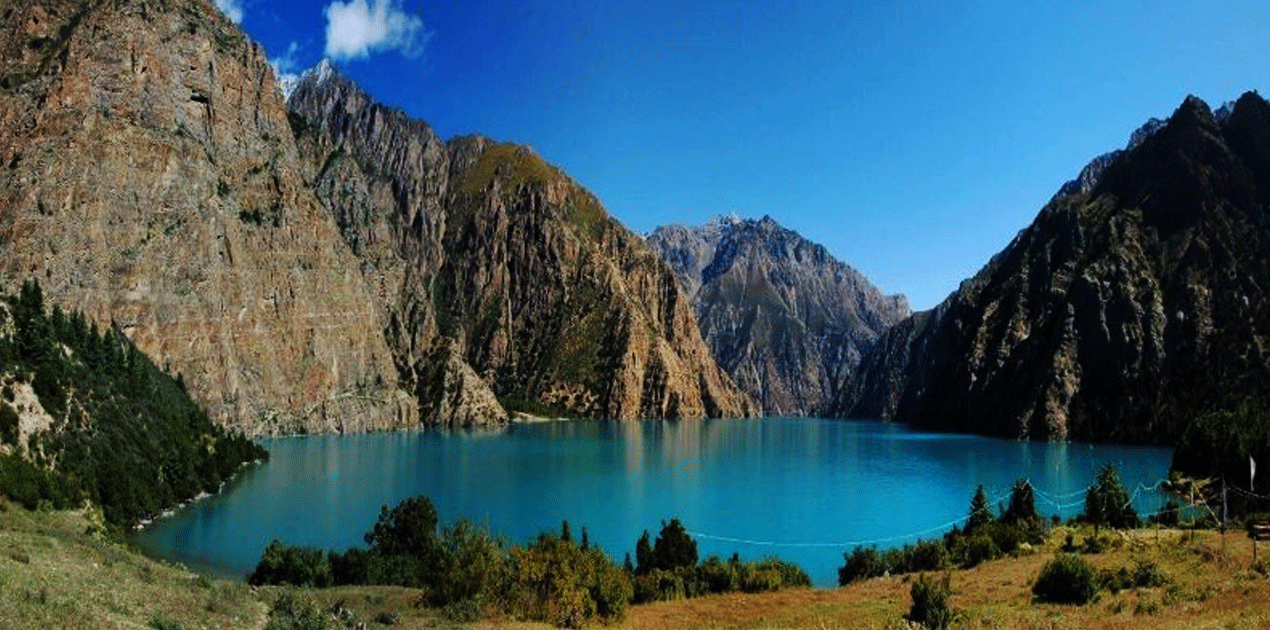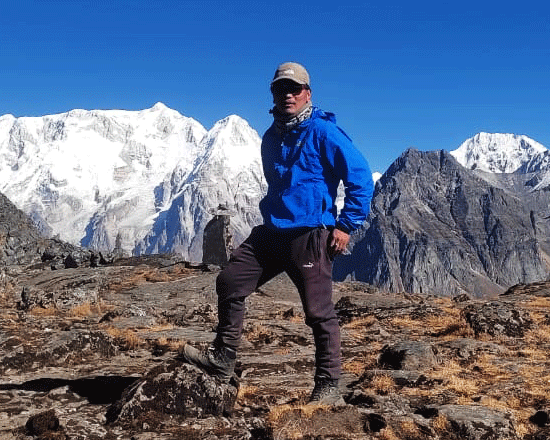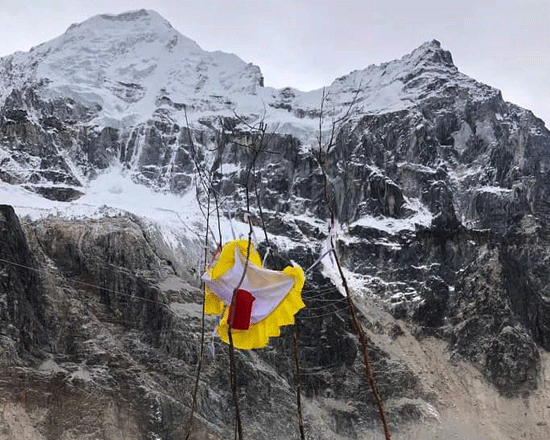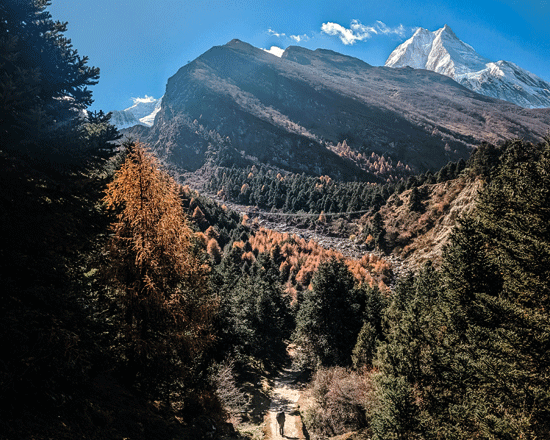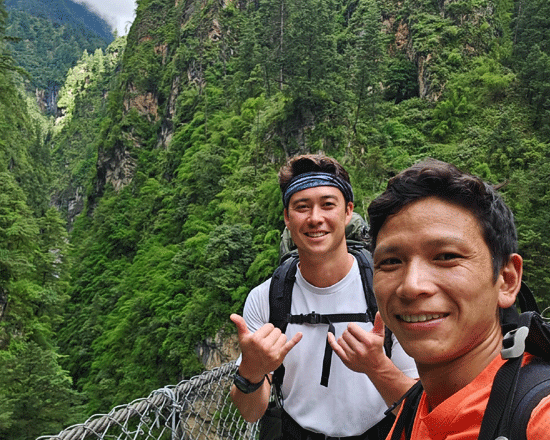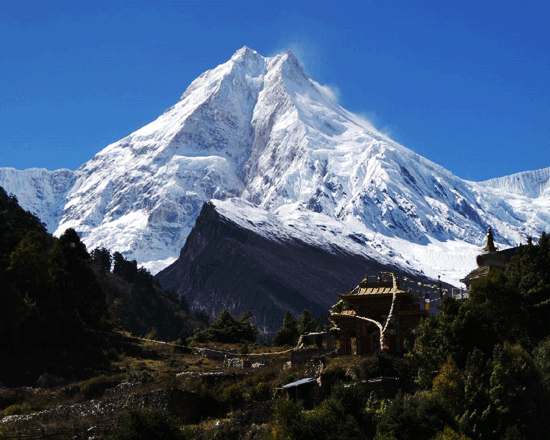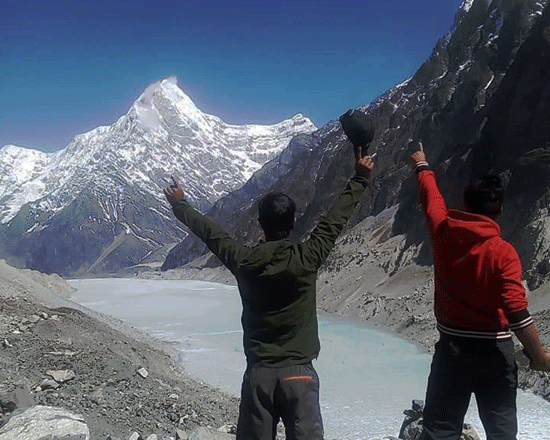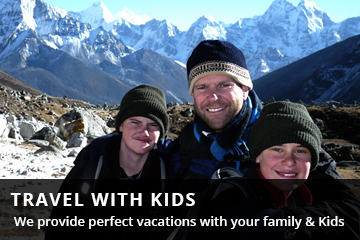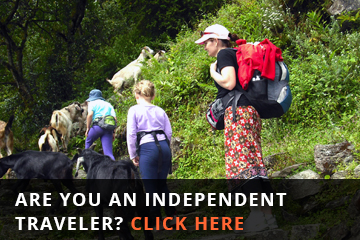Jomsom Dolpo Trek
Jomsom Dolpo Trek
Wilderness TrekkingTrip Facts
Since the terrain can be hard and the days long, hikers on these treks should be in good physical condition and have some previous mountain walking experience. Steep climbing may be involved, although it is never necessary to use ropes. Treks at this level can he arranged for periods of 16 to 21 days. Typically, a gradual ascent through a green river valley will lead you up to a number of high passes, where you will reach the altitude of 5416m. Often times, you will get a close insight into the Tibetan culture. Participants should expect to trek above 5416m/17872ft.
100%
Overview
Jomsom Dolpo Trek is Discover the Hidden Trails of Western Nepal
The Jomsom Dolpo Trek is one of the most captivating and remote adventures in the Himalayas, offering a true escape into the untouched wilderness of western Nepal. Connecting the windswept valleys of Mustang to the mystic land of Dolpo, this trail traverses ancient salt trade routes, high mountain passes, pristine lakes, and centuries-old Tibetan Buddhist culture. The Lower Dolpo trek via Jomsom is a route less traveled, promising solitude, authenticity, and breathtaking landscapes.
For trekkers looking for an off-the-beaten-path trek in Nepal, the Jomsom to Dolpo trekking route is a perfect choice. Whether you’re an adventurer in search of raw beauty or a cultural explorer keen to immerse in traditional Tibetan life, this trek delivers an unforgettable experience.
Trekking from Mustang to Dolpo: A Journey Through Time
The trek from Jomsom to Dolpo begins in the vibrant town of Jomsom, the gateway to the Mustang region and the lower part of the Mustang, Jomsom Muktinath trek, nestled along the Kali Gandaki River. From here, trekkers cross arid trans-Himalayan landscapes, high-altitude passes, and isolated villages where traditional life remains untouched by modernity.
This route reconnects with ancient trading paths that once linked Mustang and Dolpo, traversed by caravans exchanging salt and grain. Today, it allows adventurous trekkers to witness the remote highlands that few ever reach.
Lower Dolpo Trek via Jomsom: Overview
The Lower Dolpo trek via Jomsom winds through the southern section of Dolpo, home to mystical landscapes, centuries-old monasteries, and the famous Shey Phoksundo Lake. Unlike the Upper Dolpo trek, which requires more time and expense, the Lower Dolpo route is relatively more accessible yet equally rewarding.
Highlights include:
- Shey Phoksundo National Park – Nepal’s largest national park, rich in biodiversity.
- Phoksundo Lake – A turquoise, glacial lake renowned for its stunning beauty.
- High mountain passes like Jungben La Pass (5550m), Niwas La Pass, and Numa La Pass.
- Jomsom Airport Thakali villages
- Remote villages like Dunai, Dho Tarap, and Ringmo.
- Tibetan Buddhist culture and ancient Bon traditions.
Jomsom to Dolpo Trekking Route
This unique trekking route starts in Jomsom (2700m) and typically follows this progression:
- Jomsom to Kagbeni – Gateway to Upper Mustang.
- Kagbeni to Sangda Phedi – Cross arid ridges with panoramic views.
- Sangda Phedi to Sangda La Pass (5120m) – Start of remote wilderness.
- Sangda La to Chharka Bhot – A hidden valley village surrounded by barren cliffs.
- Chharka Bhot to Dho Tarap – Stunning traditional settlements and monasteries.
- Dho Tarap to Numa La Pass (5318m) – One of the most challenging sections.
- Descend via Niwas La Pass and trek to Phoksundo Lake.
- End the trek in Dunai – The administrative center of Dolpo District.
This Jomsom to Dunai trek takes you through varying landscapes, from barren cliffs to pine forests, and elevates you to pass over 5000 meters, providing exceptional views of Dhaulagiri, Kanjiroba, and other Himalayan giants.
Lower Dolpo Trekking Itinerary (Typical 18-22 Days)
Here’s a sample Lower Dolpo trekking itinerary via Jomsom:
Day 1: Flight from Pokhara to Jomsom (2,700m), trek to Kagbeni
Day 2: Trek to Sangda Phedi
Day 3: Cross Sangda La Pass (5,120m) to Dhagarjun
Day 4: Trek to Chharka Bhot (4,300m)
Day 5: Acclimatization and exploration of Chharka Bhot
Day 6: Trek to Norbulung
Day 7: Cross Niwas La Pass (5,000m) to Tokyu
Day 8: Trek to Dho Tarap (4,040m)
Day 9: Rest and explore the Dho Tarap valley
Day 10: Trek to Numala Base Camp
Day 11: Cross Numa La Pass (5,318m) to Danigar
Day 12: Cross Baga La Pass (5,190m) to Ringmo Village
Day 13: Trek to Phoksundo Lake and explore the area
Day 14: Trek to Dunai
Day 15: Trek to Juphal
Day 16: Fly to Nepalgunj and back to Kathmandu
This itinerary can be customized based on group preferences, physical ability, and weather conditions.
Shey Phoksundo Trek from Jomsom
A major highlight of the Jomsom to Dolpo trek is the opportunity to visit Shey Phoksundo Lake, one of the most beautiful lakes in Nepal. Nestled at 3,611 meters, this lake has no visible outlet and its deep turquoise color appears surreal against the barren cliffs and conifer forests.
The Jomsom to Phoksundo Lake trek offers a dramatic transformation in scenery—from the arid, wind-eroded cliffs of Mustang to the alpine serenity of Phoksundo.
Restricted Area Trek in Nepal – Permits and Regulations
The Dolpo region is classified as a restricted area trek in Nepal, meaning special trekking permits are required. The following permits are necessary for the Jomsom Dolpo trek:
- Lower Dolpo Restricted Area Permit – USD 20 per person per week (first 7 days), USD 5 per day thereafter.
- Shey Phoksundo National Park Entry Fee – NPR 3,000 per person (about USD 25).
- TIMS Card (Trekkers Information Management System) – Required for most treks unless using a government-registered trekking company.
- ACAP Permit (if entering through the Jomsom/Mustang region).
All permits must be issued through a registered trekking agency. Solo trekking is not allowed in restricted areas—you must be accompanied by a licensed guide.
Dolpo Trek Cost and Permits
The Dolpo trek cost varies depending on the length of the trek, number of participants, and level of service (standard tea house trek vs. fully supported camping trek). Camping treks may cost more due to the need for extra support staff, tents, kitchen equipment, and food supplies.
Best Time to Trek Jomsom to Dolpo
The ideal time for the Jomsom to Dolpo trek is during the dry months of spring (April to June) and autumn (September to early November).
Spring (April–June)
- Stable weather and moderate temperatures
- Blooming wildflowers and rhododendrons in lower altitudes
- Clear skies with great visibility
Autumn (September–early November)
- Crisp, dry air with crystal-clear mountain views
- Harvest season—ideal for cultural encounters
- Fewer leeches and insects compared to monsoon
Monsoon season (July–August) is not ideal due to muddy trails, landslides, and flight delays. Winter (December–February) brings heavy snow and freezing temperatures, making high passes impassable.
Off the Beaten Path Treks in Nepal: Why Choose the Jomsom Dolpo Route?
Most popular treks in Nepal follow well-established trails like Everest Base Camp or Annapurna Circuit. While beautiful, these routes are often crowded.
In contrast, the Jomsom Dolpo Trek is:
- Remote and peaceful, far from tourist crowds
- A gateway to authentic Himalayan culture and untouched landscapes
- Ideal for seasoned trekkers seeking solitude and challenge
- Rich in wildlife including blue sheep, Himalayan monals, and snow leopards
If you’re dreaming of remote treks in western Nepal, this route offers an unmatched sense of exploration and personal triumph.
High Mountain Passes on the Jomsom Dolpo Trail
The trek involves several high-altitude crossings, including:
Jungben La Pass (5550m):
A lesser-known yet majestic pass that offers panoramic views of Dhaulagiri and the Tibetan plateau.
Niwas La Pass (5000m):
Connects Chharka Bhot to the inner Dolpo region, flanked by steep rock walls and wide alpine meadows.
Numa La Pass (5318m):
One of the most challenging and rewarding climbs on the trail, offering 360° views of the snowbound peaks.
These passes demand physical fitness and acclimatization but reward you with solitude and jaw-dropping beauty.
Responsible for Trekking in Dolpo
The Dolpo region is ecologically and culturally sensitive. Trekkers are advised to:
- Pack out all non-biodegradable waste
- Respect local customs and ask before photographing people
- Support local teahouses and buy local products
- Avoid over-bargaining or disrupting traditional lifestyles
Why Trek with Nepal Wilderness Trekking?
As a licensed and experienced trekking company, Nepal Wilderness Trekking Pvt. Ltd. specializes in restricted area treks in Nepal, including the Jomsom to Dolpo trek. Our certified guides have deep knowledge of the terrain, culture, and logistics necessary to make your trek safe, enriching, and memorable.
We offer:
- Tailor-made itineraries based on your time and fitness
- Full support with restricted permits and logistics
- English and Japanese-speaking guides
- Ethical and eco-conscious travel practices
- Flexible options for private or group treks
Final Thoughts
The Jomsom Dolpo trek is a once-in-a-lifetime Himalayan journey that takes you across ancient paths Chharka bhot which is a trail connected with the upper Dolpo trek, soaring mountain passes, and unspoiled valleys. It’s a chance to truly disconnect and reconnect, with nature, culture, and yourself.
If you’re ready to go beyond the usual routes and explore remote treks in western Nepal, contact Nepal Wilderness Trekking today to start planning your Jomsom to Dolpo adventure.
Detail Itinerary
Day 1: Flight from Pokhara to Jomsom (2,700m), trek to Kagbeni (2,800m)
Trek Distance: ~11 km | Duration: 3–4 hours
A scenic early morning flight takes you over the Annapurna and Dhaulagiri ranges into the windy Kali Gandaki valley. After landing in Jomsom, the trek begins with a gentle walk along the Kali Gandaki River toward Kagbeni—a historic village and gateway to Upper Mustang.
Culture: Kagbeni is a Tibetan-influenced village with a 500-year-old monastery, chortens, mani walls, and prayer flags fluttering in the wind. Its mud-brick houses reflect ancient salt trade routes.
Flora/Fauna: The landscape is arid with juniper bushes, buckthorn, and occasional seabuckthorn shrubs. Himalayan griffons and lammergeiers may be spotted overhead.
Day 2: Trek to Sangda Phedi (3,710m)
Trek Distance: ~16 km | Duration: 6–7 hours
Today’s trail climbs steeply out of the Kali Gandaki valley, ascending high above the river. The remote trail passes small settlements and shepherd huts before reaching Sangda Phedi, a high camp below the Sangda La.
Culture: This region is sparsely populated; you may encounter seasonal yak herders.
Flora/Fauna: Alpine shrubs dominate the landscape. Blue sheep and marmots are common; snow leopards are rare but present in this remote area.
Day 3: Cross Sangda La Pass (5,120m) to Dhagarjun (3,290m)
Trek Distance: ~17 km | Duration: 7–8 hours
A challenging and rewarding day, crossing the high Sangda La Pass with sweeping Himalayan views. After the pass, the trail descends into the less-traveled valleys near Dhagarjun.
Culture: Few settlements exist here, but prayer flags at the pass reflect deep Buddhist influence.
Flora/Fauna: Sparse alpine vegetation; keep an eye out for Himalayan tahrs on high ridges.
Day 4: Trek to Chharka Bhot (4,300m)
Trek Distance: ~14 km | Duration: 6 hours
Today’s trail winds through narrow canyons and wide yak pastures before entering Chharka Bhot, a picturesque Bon and Buddhist village perched beside the Barbung River.
Culture: Chharka Bhot is home to both Bonpo and Tibetan Buddhists. Ancient monasteries and traditional Tibetan houses dominate the village.
Flora/Fauna: Willows and dwarf junipers line the riverbanks. Wildlife sightings may include vultures and Himalayan foxes.
Day 5: Acclimatization and exploration of Chharka Bhot
Rest day to adjust to the altitude and explore the spiritual and cultural beauty of Chharka Bhot.
Activities: Visit centuries-old monasteries, interact with villagers, and learn about their Bon practices—a pre-Buddhist religion unique to this area.
Day 6: Trek to Norbulung (4,750m)
Trek Distance: ~13 km | Duration: 5–6 hours
A gradual ascent through remote terrain and grazing pastures brings you to Norbulung, a seasonal herders' camp.
Culture: Few signs of permanent habitation; used primarily by Dolpo-pa nomads.
Flora/Fauna: Alpine meadows with edelweiss and wild rhubarb. Possible encounters with herds of yaks.
Day 7: Cross Niwas La Pass (5,000m) to Tokyu (4,200m)
Trek Distance: ~18 km | Duration: 7–8 hours
Crossing Niwas La Pass, you’ll enter Upper Dolpo—a land untouched by time. Tokyu is one of the highest permanent settlements in Dolpo.
Culture: Tokyu is a beautiful village with a large gompa. The locals follow ancient Tibetan Buddhist customs.
Flora/Fauna: Barren high-altitude terrain, with small bushes and scattered mosses.
Day 8: Trek to Dho Tarap (4,040m)
Trek Distance: ~8 km | Duration: 2–3 hours
A short and pleasant descent to Dho Tarap, a cultural heartland of Dolpo.
Culture: Dho Tarap is known for its vibrant culture, unique dress, and deeply rooted Tibetan traditions. It's surrounded by monasteries and chortens.
Flora/Fauna: Cultivated fields of barley and potatoes appear here, a contrast to previous barren landscapes.
Day 9: Rest and explore the Dho Tarap Valley
Spend the day exploring monasteries, interacting with the locals, and learning about their nomadic lifestyle.
Activities: Visit Ribo Bhumpa Monastery and nearby Bonpo shrines.
Day 10: Trek to Numa La Base Camp (4,440m)
Trek Distance: ~10 km | Duration: 4–5 hours
The trail heads northwest into wild terrain as you approach the foot of Numa La. Camp under starlit skies with panoramic mountain views.
Flora/Fauna: Rocky terrain with patches of alpine grasses. Snow pigeons and choughs can be seen.
Day 11: Cross Numa La Pass (5,318m) to Danigar (4,510m)
Trek Distance: ~15 km | Duration: 6–7 hours
A tough climb over the highest pass of the trek rewards you with magnificent views of Mt. Dhaulagiri and surrounding peaks.
Culture: Rock cairns and prayer flags mark the pass—an ancient pilgrim route.
Flora/Fauna: High-altitude habitat for snow leopards, though sightings are rare.
Day 12: Cross Baga La Pass (5,190m) to Ringmo Village (3,600m)
Trek Distance: ~17 km | Duration: 7 hours
Another high pass leads you to Ringmo, a culturally rich village near Phoksundo Lake.
Culture: Ringmo is a traditional Bon village with stone houses, prayer wheels, and an 800-year-old Bon monastery.
Flora/Fauna: The descent reveals greener vegetation—birch and pine begin to reappear.
Day 13: Trek to Phoksundo Lake and explore the area (3,611m)
Trek Distance: ~4 km | Duration: 1 hour
A short walk to the turquoise waters of Phoksundo Lake, nestled beneath cliffs and snow-capped peaks.
Activities: Visit the lakeside monastery, explore sacred sites, and enjoy the serene landscape.
Flora/Fauna: Blue pine forests, Himalayan monals, and musk deer are found in the surrounding Shey Phoksundo National Park.
Day 14: Trek to Dunai (2,140m)
Trek Distance: ~20 km | Duration: 6–7 hours
A long descent through forests and gorges brings you to the district headquarters of Dolpa Dunai.
Culture: Dunai is a lively administrative town with a blend of Dolpo culture and modern influences.
Day 15: Trek to Juphal (2,320m)
Trek Distance: ~6 km | Duration: 2–3 hours
An easy final day’s hike to the small airstrip at Juphal.
Flora: Terraced fields, apple orchards, and pine groves decorate the trail.
Day 16: Fly to Nepalgunj and back to Kathmandu
A morning flight from Juphal to Nepalgunj, and onward to Kathmandu by afternoon.
Cost Included
- All land transfers as per the itinerary by private car/van
- Pokhara to Jomsom flight
- Juphal to Nepalguj and Nepaljung to Kathmandu flight
- One night in a deluxe hotel in Pokhara with breakfast
- Annapurna Conservation Area Entry Permit
- Shey Phoksundo National Park Entry Permit
- Lower Dolpa Restricted Area Entry Permit
- Accommodation during the trek:
- Teahouse (twin-sharing basis)
- Camping (twin-sharing two-man tent)
- All meals (Breakfast, Lunch, and Dinner) during the trek
- Experienced English-speaking trekking guide
- Required porter(s) for the trek
- Full-board trekking program as per the itinerary
- Staff wages, food, accommodation, equipment, insurance, and other necessary facilities
- Government taxes
- Service charge
Cost Excluded
- Nepal entry visa
- Travel Insurance
- Medical evacuation in case of emergency
- Accommodation in Kathmandu
- Personal expenses
- Bar bills and all beverage
- Expenses of a personal nature (e.g., soft/hard drinks, tips, etc.)

